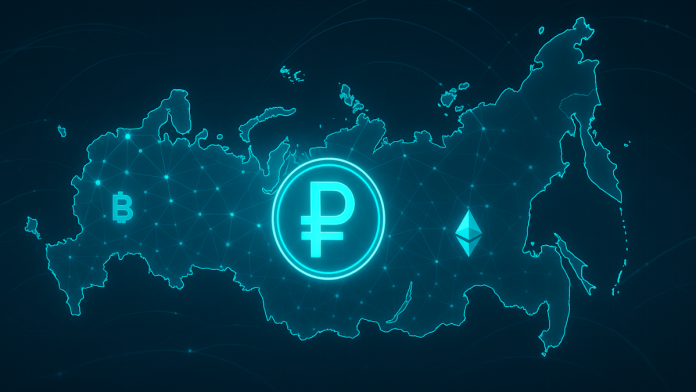Russia is moving quickly to build its own digital money systems and cryptocurrency framework. This big step is not just about technology—it is also about control and independence. The country, under the leadership of President Vladimir Putin, is creating a system that will reduce its reliance on traditional financial networks and strengthen its economy.
The move shows how digital currencies and blockchain are becoming tools for governments, not just individuals. Russia’s plan includes a national digital currency, a state-controlled crypto exchange, and new rules for crypto mining. These developments are changing how the country deals with money both inside and outside its borders.
Building a Sovereign Digital Ruble
One of the biggest parts of this plan is the creation of the “digital ruble”. This is a central bank digital currency, also known as CBDC. It works like regular money but is completely digital. The Central Bank of Russia, led by Governor Elvira Nabiullina, will control it, and it will be used by banks, shops, and citizens.
The mass rollout of the digital ruble has been set for September 1, 2026. Before that, Russia is testing the system with major banks like Sberbank and VTB Bank, along with large retailers. This will make Russia one of the few countries in the world with a nationwide CBDC in place.
G-7 works on new measures to limit Russia’s oil exports and war funding
Unlike cryptocurrencies like Bitcoin, the digital ruble will not be decentralized. It will be fully managed by the central bank. This means the government will have oversight of all transactions. Officials say this will make payments faster, cheaper, and more secure. Critics, however, point to possible risks of tighter surveillance.
National Crypto Exchange and International Trade
Russia is also setting up its own national crypto exchange. This platform will be under strict state control and overseen by the Ministry of Finance. It is designed for “highly qualified investors” and for international trade. The system is being built within an experimental legal regime that allows certain freedoms while keeping strong government oversight.
Reports from March 2025 show that Russia has already used digital assets, including Bitcoin, to pay for oil and other goods in trade with China and India. By using crypto, Russia can avoid relying on traditional financial systems like SWIFT, which are controlled by Western institutions.
Austria’s Raiffeisen unable to complete sale of its Russian operations
This has major implications for global trade. If countries start using digital currencies for transactions instead of traditional payment systems, the balance of financial power may shift. It could mean less dependence on the US dollar and more reliance on state-backed digital currencies.
At the same time, the government has made crypto mining legal. Mining companies in Russia do not have to pay Value Added Tax (VAT). This law, signed by President Putin in late 2024, has attracted new investors and increased the country’s role in global crypto mining. Russia is now becoming one of the largest players in this sector, providing more security to proof-of-work networks and adding to its economic strength.
Balancing Control and Innovation
Russia’s approach to crypto is not simple. On one hand, everyday use of decentralized cryptocurrencies inside the country remains limited. The State Duma has passed laws that restrict the domestic use of digital coins like Bitcoin for regular payments. On the other hand, the government is encouraging the use of digital assets in international trade and investing heavily in controlled systems.
This strategy is very different from other countries. For example, China has banned most crypto activity while promoting its digital yuan. Russia is taking a middle path. It is restrictive at home but open abroad, especially when digital assets can help with trade and financial independence.
The crypto community around the world has noticed these moves. Some supporters of decentralization worry that Russia’s system will be too controlled and take away freedom. Others believe it proves that blockchain technology is powerful enough to be adopted by large economies and governments.
Discussions among investors and analysts often highlight that Russia’s moves could change the way digital assets are used across borders. While opinions differ, one thing is clear: Russia, under Putin’s leadership and with support from the Central Bank, is pressing ahead with building a crypto system that serves its national interests.
Russia’s journey toward digital money and sovereign crypto infrastructure marks a turning point in how nations use blockchain technology. By creating its own rules, systems, and currencies, Russia is setting up a unique path. The full impact of this bold move will be seen as the digital ruble and national crypto exchange continue to roll out in the years ahead.


